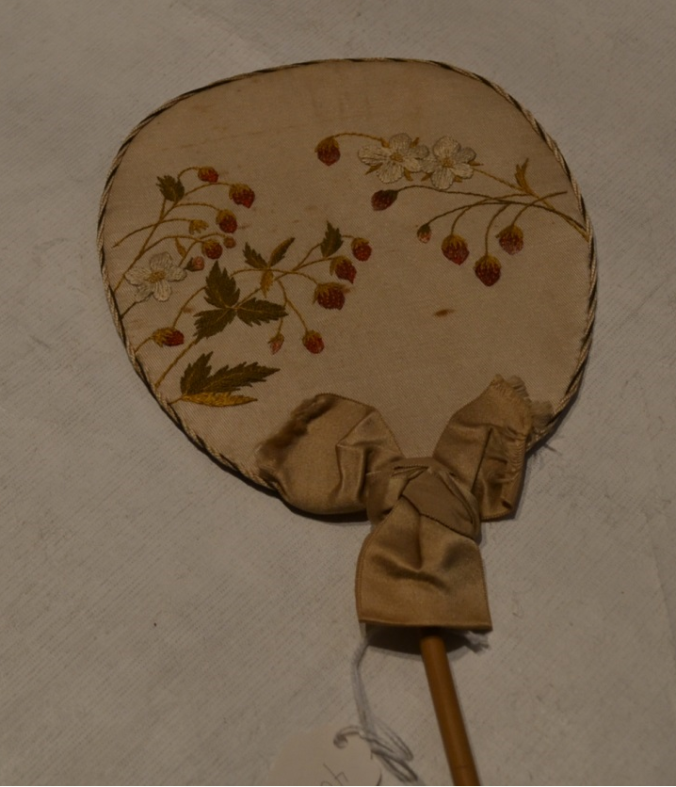By Safire Santos
This week’s object is a late 18th century women’s fan with an embroidered design of a butterfly and floral motif on both sides. It is egg shaped with silk covered paper on a wooden handle with ribbon and lace edging. This item will soon be on display in the Deyo House for all to see.

Fans such as these started to become popular in the 15th century and were essential. Long handled fans were used to fan fires in order to ignite larger flames which would be used for cooking purposes. When handheld fans started to become more fashionable towards the end of the 1500’s, Paris became one of the main centers for fan production.
During the 17th century, handheld fans were an essential part of a women’s dress. Hand held fans became not only a status symbol, but a way for women to hold on to the little rights that they had left. One flick of a hand fan from a woman could convey many different messages to suitors or anyone else who would be waiting for an important message.
Fans were tied in with scandals, love, and stories of intrigue. Because of this, a sort of “fan language” developed. During the 18th century, hand fans were primarily given to wealthy brides and widows who were in mourning. Into the late 18th century, fans were much more elaborate. This popularity died down in the 19th century, when fans became a symbol of frailty in the rise of women’s rights movements.

Sources:
Gay, Barbara. “‘Secret’ Language of Hand Fans.” Epoch Times. 2014 January 21.
“History of the Hand Fan is Long and Colorful.” Country Home Magazine. 1987 July 5.
Parr, Louisa. “History of the Fan.” Victoriana Magazine.
“The language of the hand fan.” allhandfans.com.